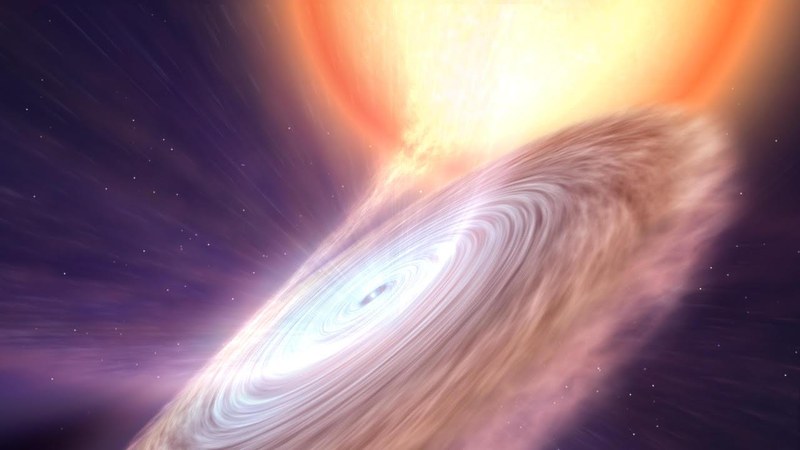Discovery of a neutron star that behaves like a black hole
Mar 02, 2023
An international scientific team, in which Yuri Cavecchi, from the physics department of the UPC has participated, and led by the Instituto de Astrofísica de Canarias (IAC), has found a neutron star that steals matter from a companion star in a violent and unstable. This process, previously only observed in black holes. The study is published in the journal Nature.
X-ray binaries are systems that are made up of a compact object, a neutron star or a black hole, and a star of a similar size to the Sun. The compact object feeds on material that it subtracts from the companion star through a disk that emits large amounts of light, especially in X-rays. This process in which the compact object incorporates material, known as accretion, usually occurs in violent eruptions during which the system becomes up to a thousand times brighter.
The Swift X-ray binary J1858.6-0814 was discovered in 2018 during one of these spectacular eruptive episodes. It baffled the astronomical community from the start, as it had been experiencing amazing flares for a year, emitting at all wavelengths from radio waves to X-rays. The origin of these cosmic fireworks was unknown, but they were so bright that the scientific community believed that the compact object must be a black hole. However, the 2020 discovery of thermonuclear explosions identified the presence of a solid surface on the compact object, thus confirming that Swift J1858 contains a neutron star.
Thanks to an international observational campaign with multiple telescopes, the team has discovered that Swift J1858 presents the same exotic accretion instabilities as GRS 1915+105, a black hole that has served as a Rosetta stone to decipher the complex behavior of this neutron star.
The result of the investigation shows that such "instabilities" are a fundamental physical process and independent of the nature of the compact object that is feeding on matter. This work proposes a new scenario that allows us to explain what happens in the vicinity of these exotic objects (neutron stars and black holes) when they incorporate matter at very high rates.
The research has been published in Nature:

Share: